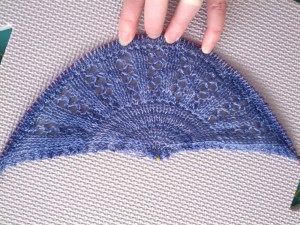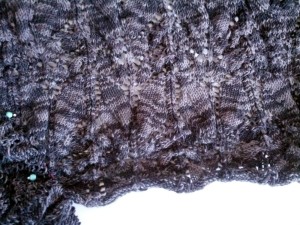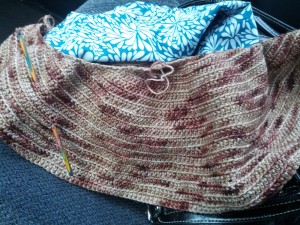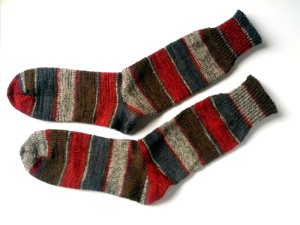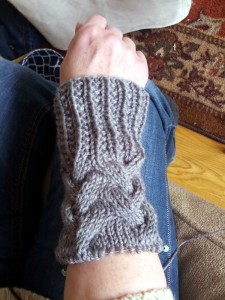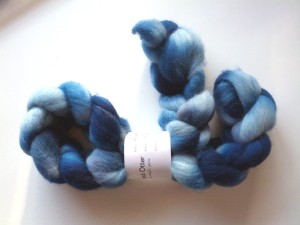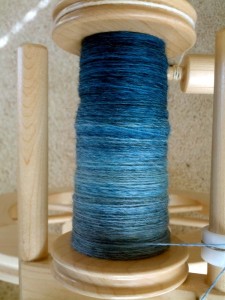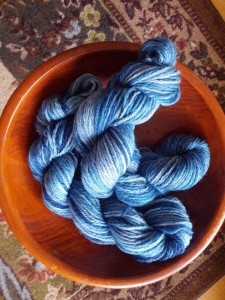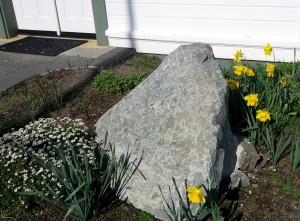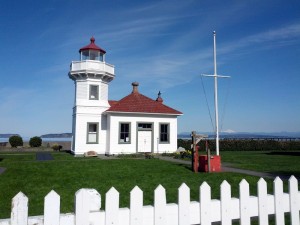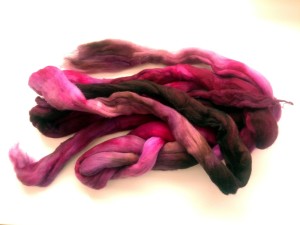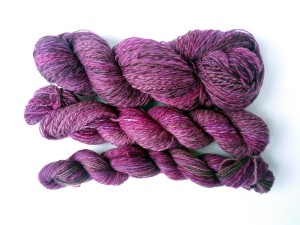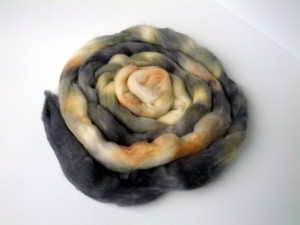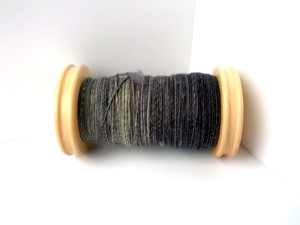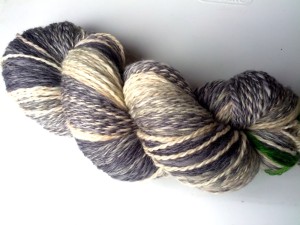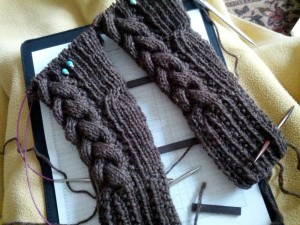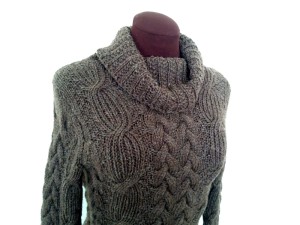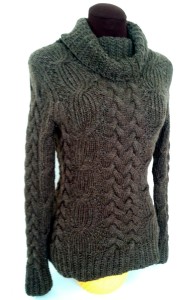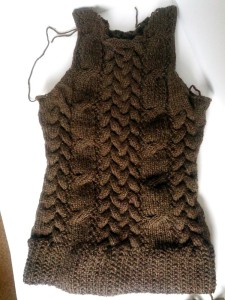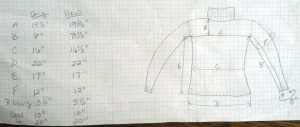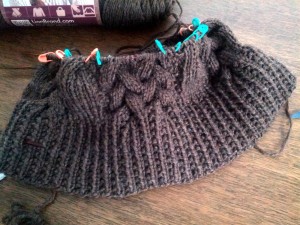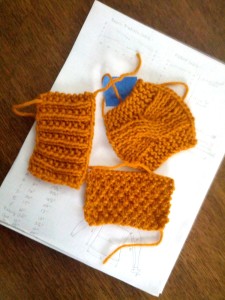Every so often I get inspired to drop everything and make up something new. As in, really make stuff up. And you know I always have a few an overabundance of projects in progress. I didn’t need to start anything else. But the inspiration bug was overwhelming. So I sat down to sketch and plot and plan. When the Muse speaks, we must listen. Right?
The design challenge this time is for a half-pi shawl with a Spring theme. What is a half-pi, you ask? A pi shawl is one that is knit in the round with regular increases based on the mathematical number pi so that the finished product is perfectly round. A half-pi uses the same increase principle, but is only half of the circle and is knit back and forth in rows. Typically, the diameter of a pi or half-pi shawl is equal to the wingspan (arms out, measured fingertip to fingertip across the shoulders) of the shawl’s owner. To give you an idea of the amount of work involved with a project of this size: the last pi shawl I completed took 184 hours of knitting time. Hopefully this one will be at least half that amount of time.
I visited my stitch dictionaries once again. (These poor books are so well-loved, with little flag markers sticking out all over. You’d think I would have them memorized by now.) Spring starts with rain, so little raindrops went in the first section. Then there are the first tentative buds poking their heads from the soil, so that went in the second section. The third section represents the smaller flowers seen in early spring, and the fourth section represents the larger, more confident flowers seen in late spring. The border is still a work-in progress, but is planned to represent the transition to summer.
I seem to be obsessed with seeing the patterns laid out as a whole so that I can visualize how the individual elements interact with each other before I cast on. In this way I can see if an element needs to shift to one side a few stitches, or if I need to add or subtract ground stitches. As knitters, we are used to seeing only a portion the overall pattern charted out – just enough to see one repeat of each individual stitch pattern. This means that my spreadsheets are quite scary to most everyone else. (I love a good, organized spreadsheet!) That’s okay, I’ll just pare things down if I end up sharing the pattern with anyone else.
I chose a bright periwinkle blue laceweight yarn and got started knitting the first rows. The beginning is a simple stockinette, with increases according to the pi shawl principles, until the stitch count is large enough to start the patterning in the first section.

